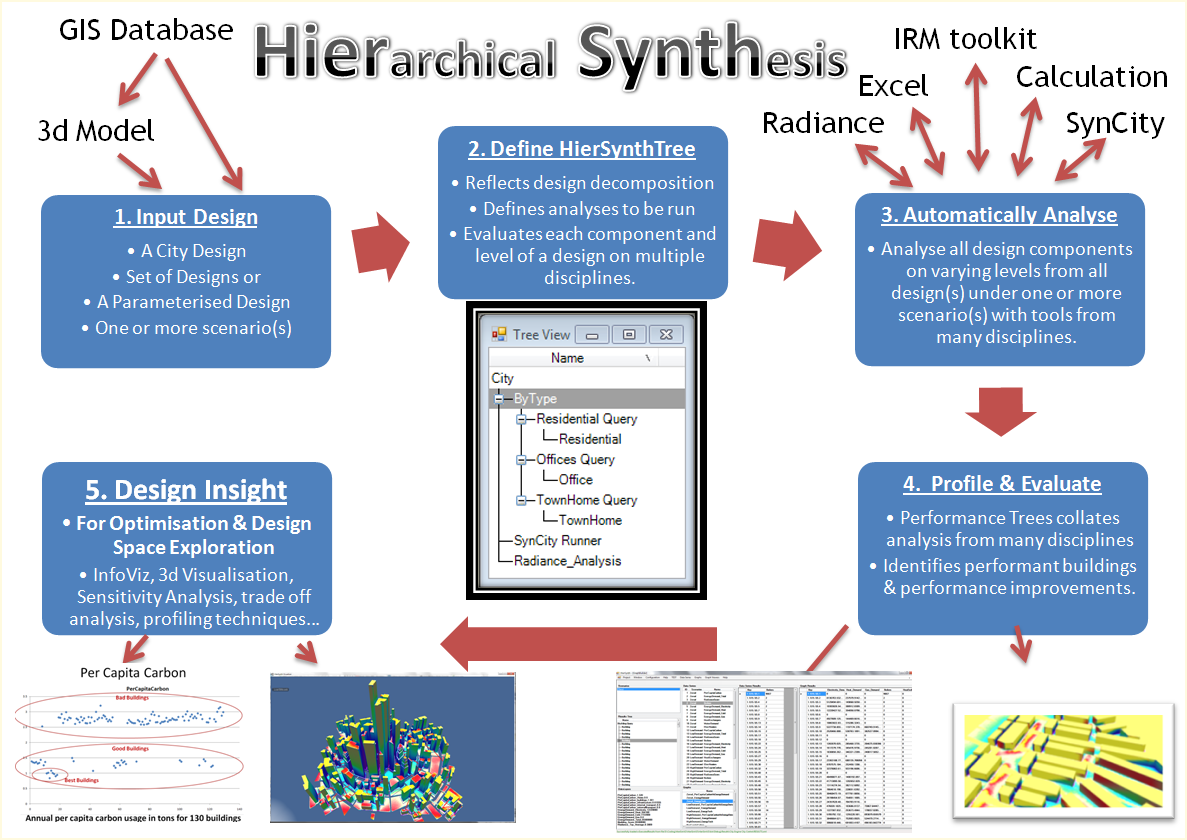HierSynth
Hierarchical Synthesis is a computational framework for representing and automatically analysing hierarchical designs in order to synthesis design insight.
HierSynth has been created to aid urban master planners in the process of design evaluation. HierSynth is being developed and demonstrated in collaboration with www.arup.com
HierSynth Architecture
The below diagram illustrates the HierSynth architecture.

Hierarchical Synthesis is a computational framework for representing and automatically analysing hierarchical designs in order to synthesis design insight.
HierSynth has been created to aid urban master planners in the process of design evaluation. HierSynth is being developed and demonstrated in collaboration with www.arup.com
HierSynth Architecture
The below diagram illustrates the HierSynth architecture.

- Firstly one or more designs in the form of a Geographic Information System database is identified along with input 3d models (which HierSynth can generate from GIS data). In addition a number of analysis scenarios are prepared, for example high and low carbon situations.
- These designs are then used to create the heart of HierSynth - a HierSynthTree which is a hierarchical decomposition of the design, perhaps by geographical enclosement. This tree is created from database query nodes and templates instantiated for each design element. The HierSynthTree is then annotated with the analysis to be run, each of which is configured through a standard interface.
- Once created the HierSynthTree can be run automatically in four steps. Firstly the scenarios are read in and evaluated. Secondly the HierSynthTree is expanded by executing queries on design databases instantiating templates for each design element. Thirdly the analysis nodes are executed with external industry standard analysis tools being run and results read back and stored within the HierSynthTree. Finally an evaluation step occurs which evaluates each component and each aggregation point under many disciplines to help the user identify performance problems.
- HierSynth includes number of analysis tools and techniques such as scope for the automatic creation of 3d walkthrough visualisations, automatic graphs and interactive explorations of data.
- Finally from the data & visualisations generated we aim to have given the urban masterplanner greater insight into their design which would not otherwise have been possible.
- Design Decomposition
- Design performance should be assessed on every level from city down to individual buildings.
- Interdisciplinary
- Sustainable design is inherently multi-disciplinary, thus HierSynth must include analyses and performance assessment from all disciplines.
- Automation
- A critical issue in urban master planning is that whilst the design process may have many design cycles it is rare to have more than two full analysis runs due to the length of time analyses take. Once configured analysis runs and initial interpretation are automated giving dramatically faster design insight
- Performance Aggregation
- Given the wealth of design elements and their analysis data generated from many disciplines it is critical that each discipline provides performance metrics on each design element. All such metrics should then be combined into a performance metric for that design element. Following the design decomposition principle all levels of the design should have similar performance aggregation metrics aggregating the performance of contained design elements.
- Visualisation
- Urban master planning is a visual discipline, thus we integrated a 3d walkthrough engine.